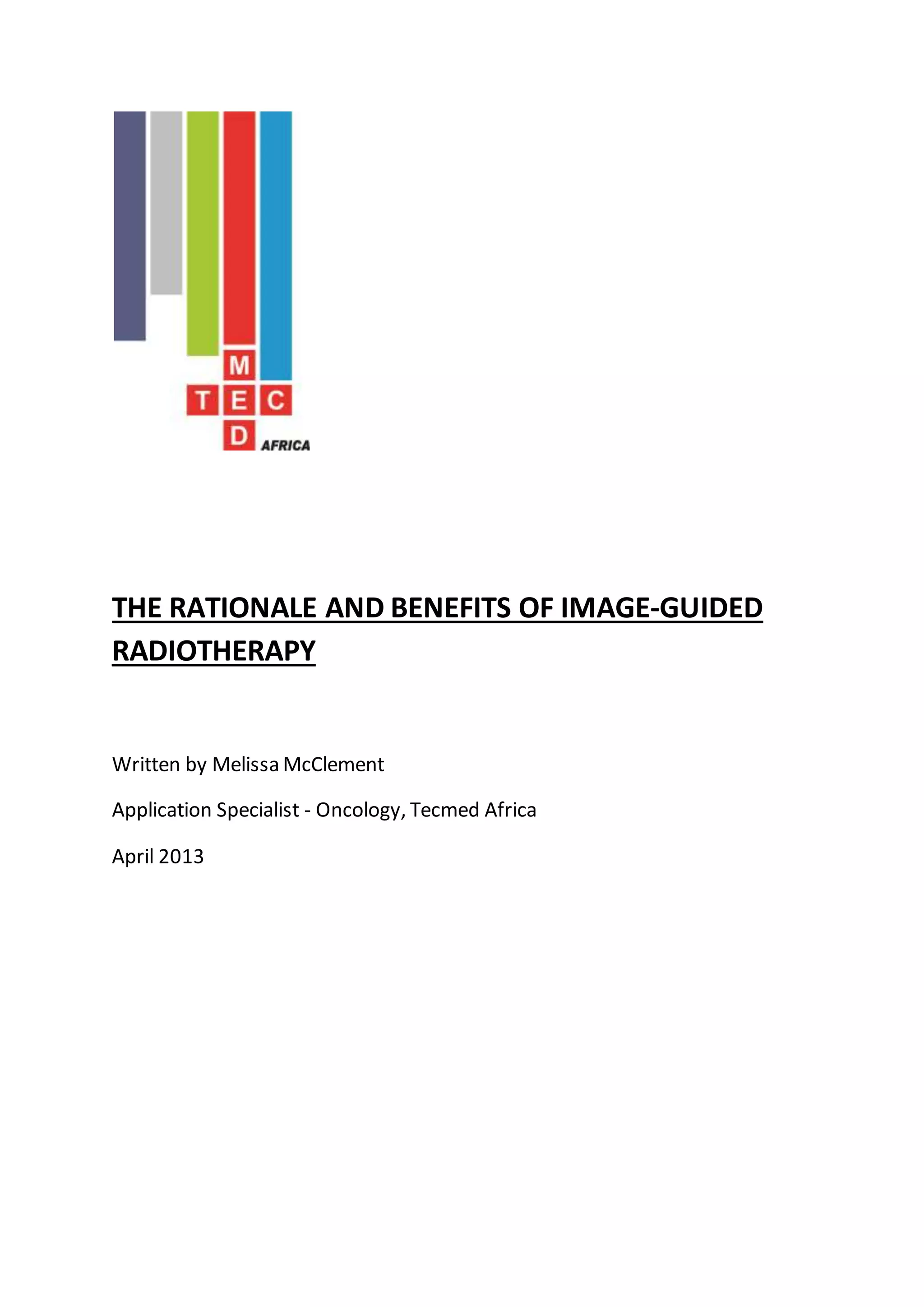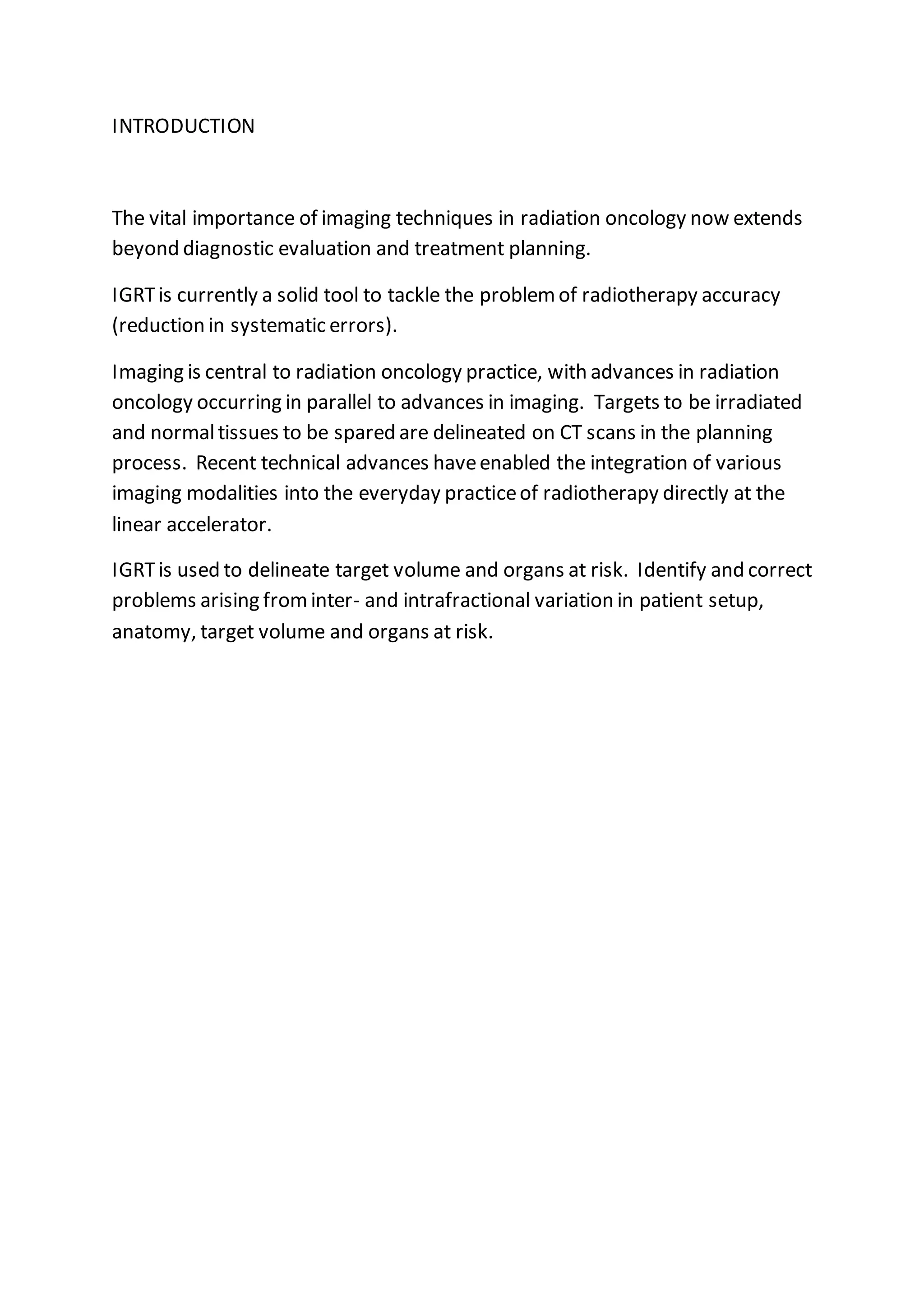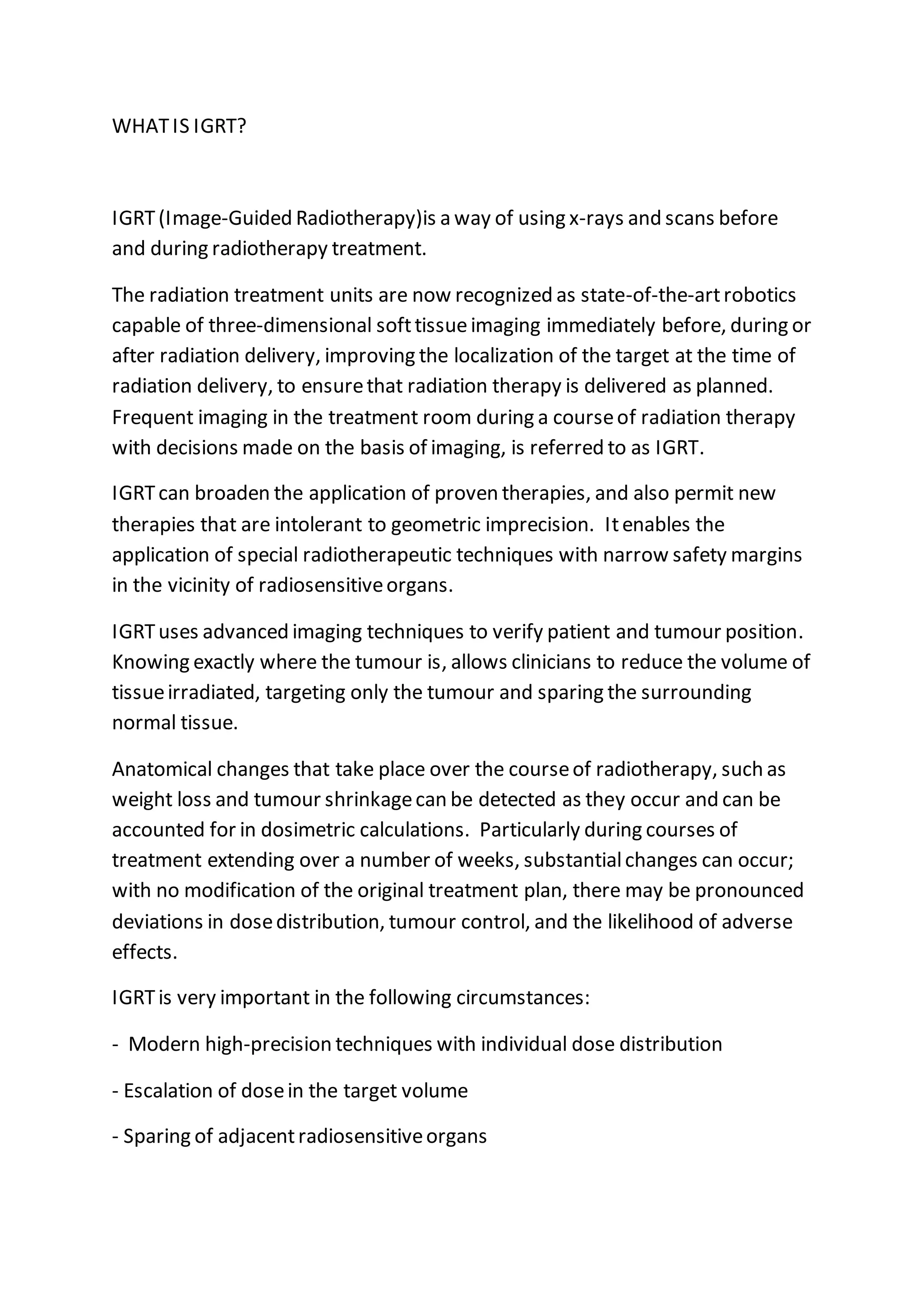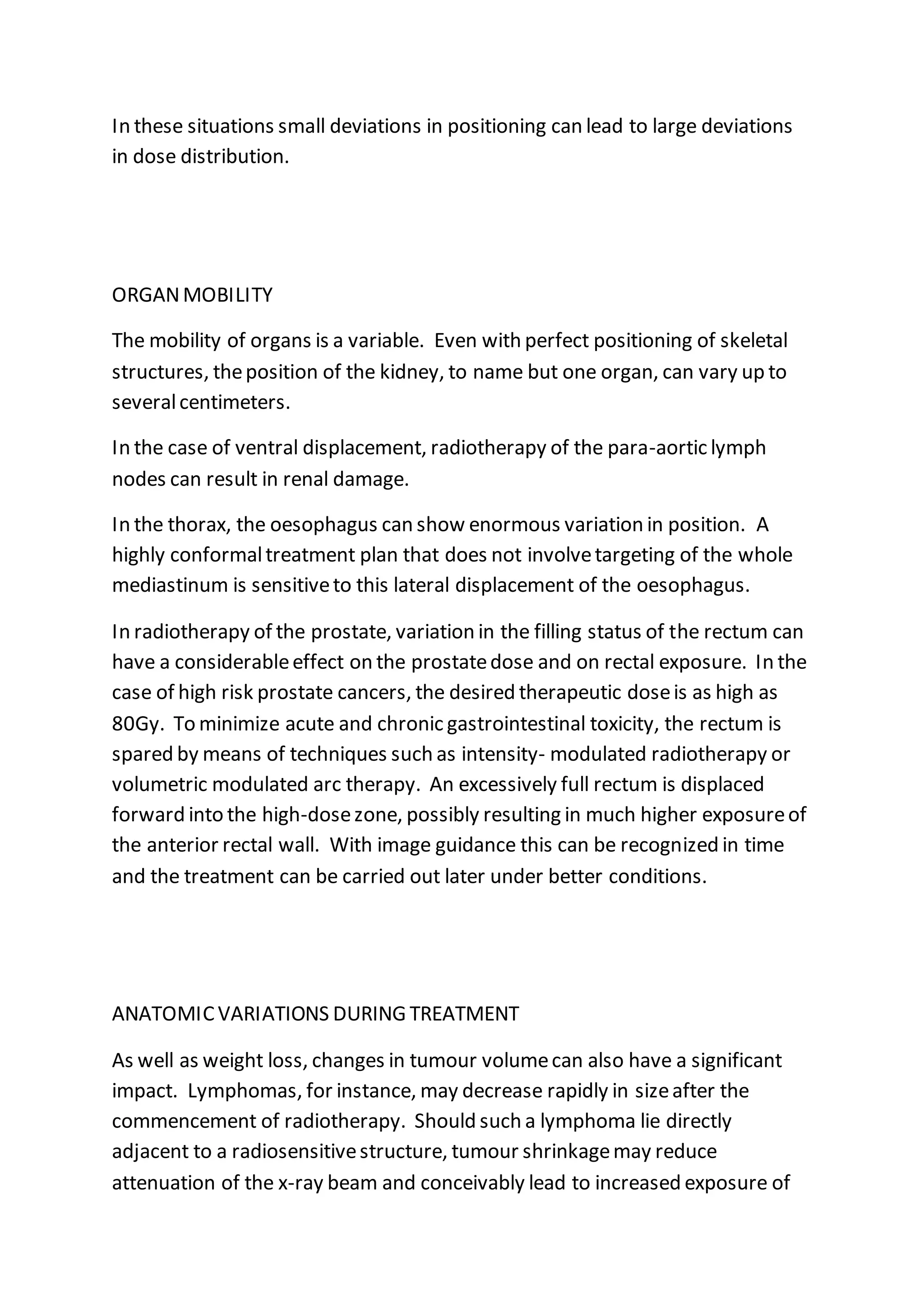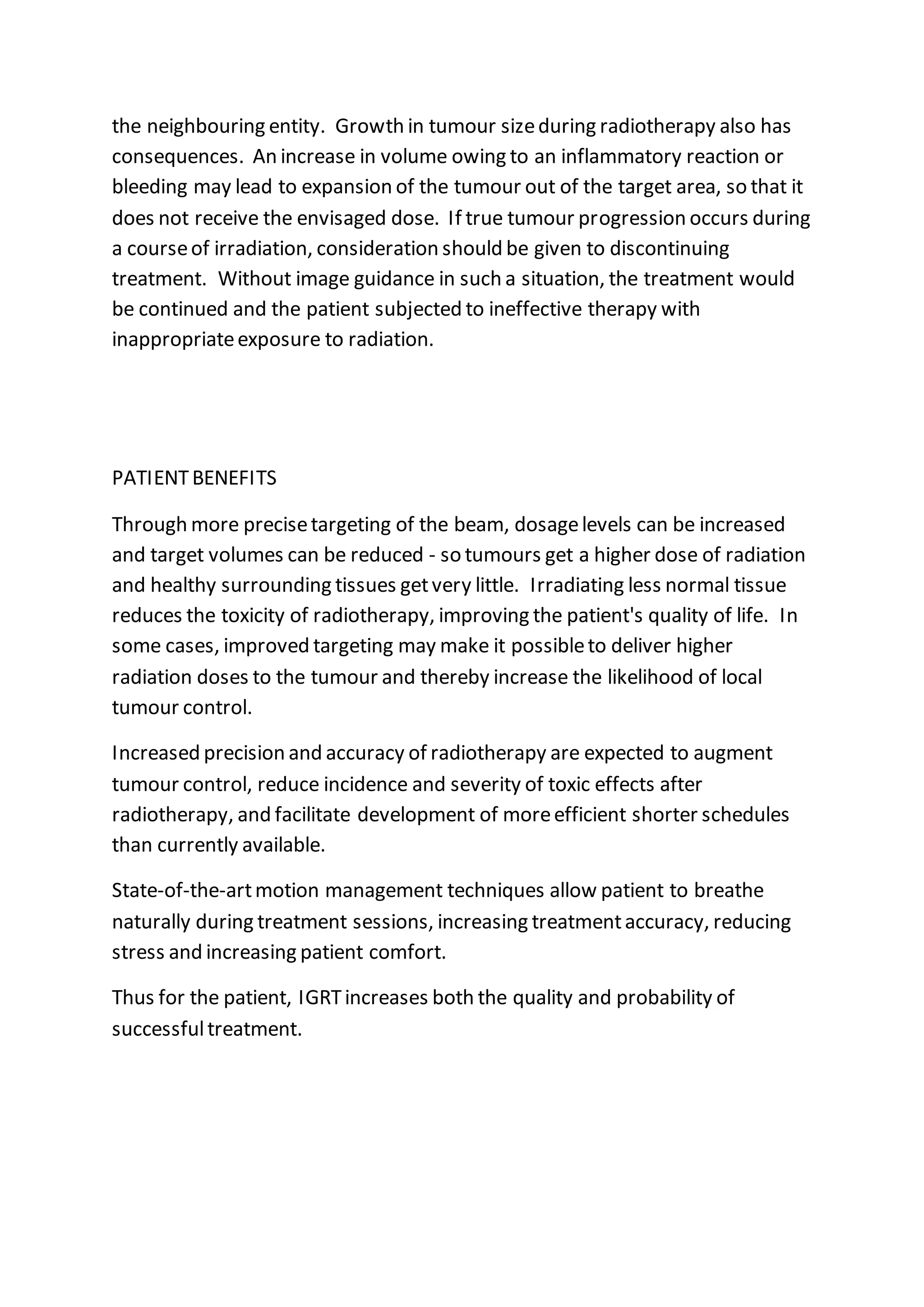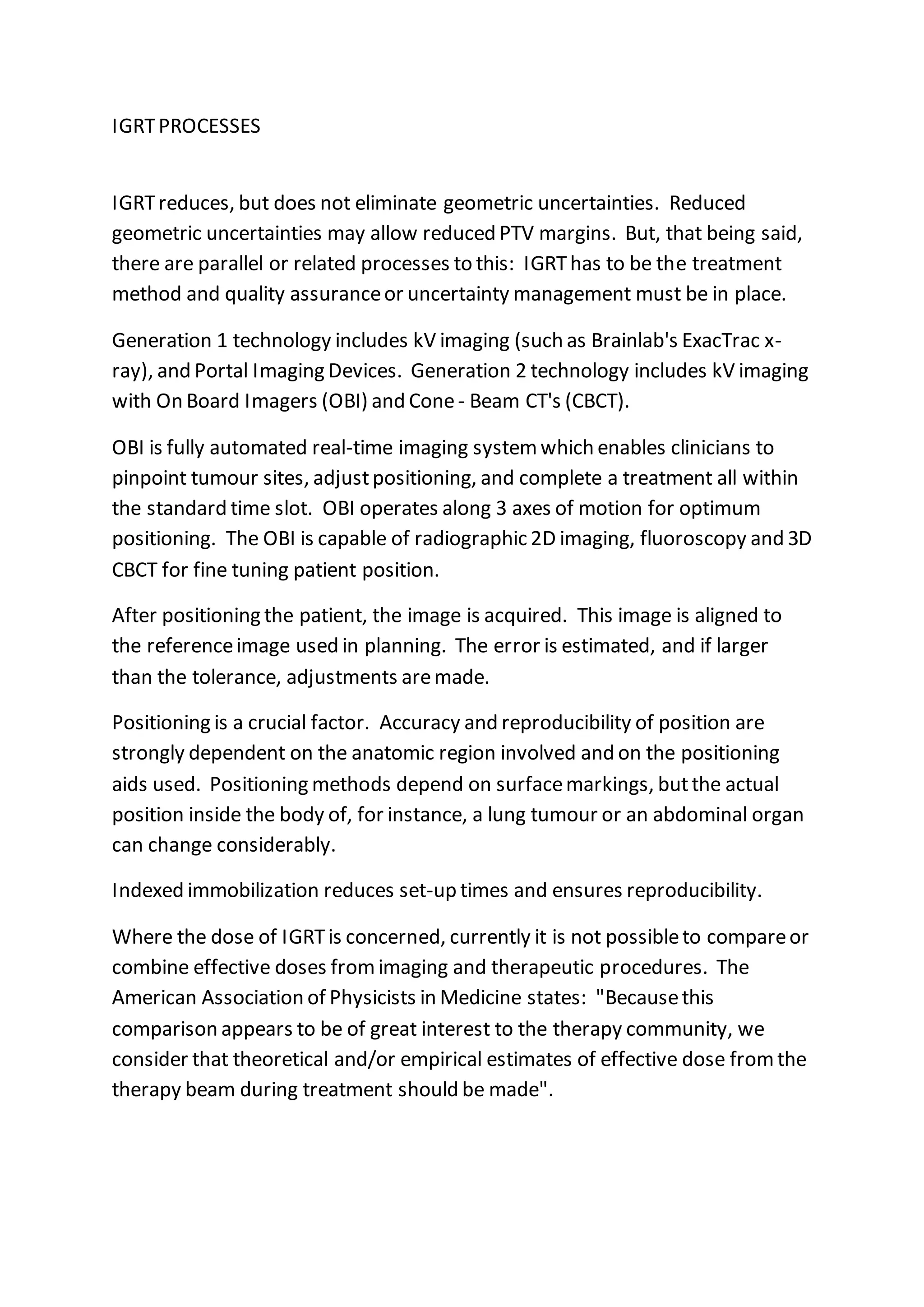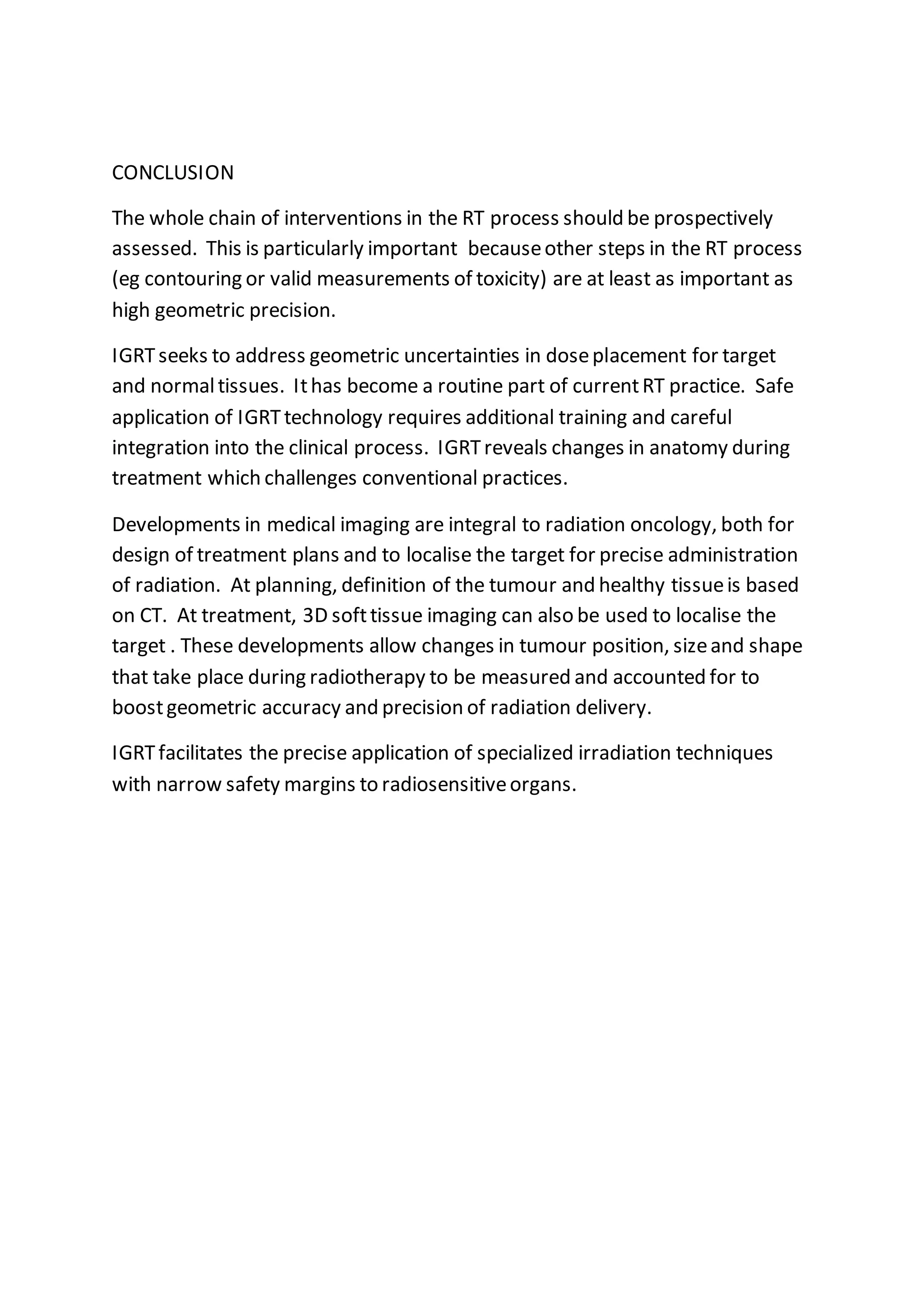IGRT (Image-Guided Radiotherapy) uses x-rays and scans before and during radiation therapy to more precisely target tumors and reduce radiation exposure to healthy tissues. IGRT allows doctors to detect and correct errors in patient positioning and account for changes in tumor size or position during treatment. This improves accuracy and allows higher radiation doses to tumors or reduced margins around tumors, lowering toxicity risks and improving patient outcomes and quality of life. While requiring additional resources, IGRT has become a standard part of radiation therapy by improving precision and reducing uncertainties.
